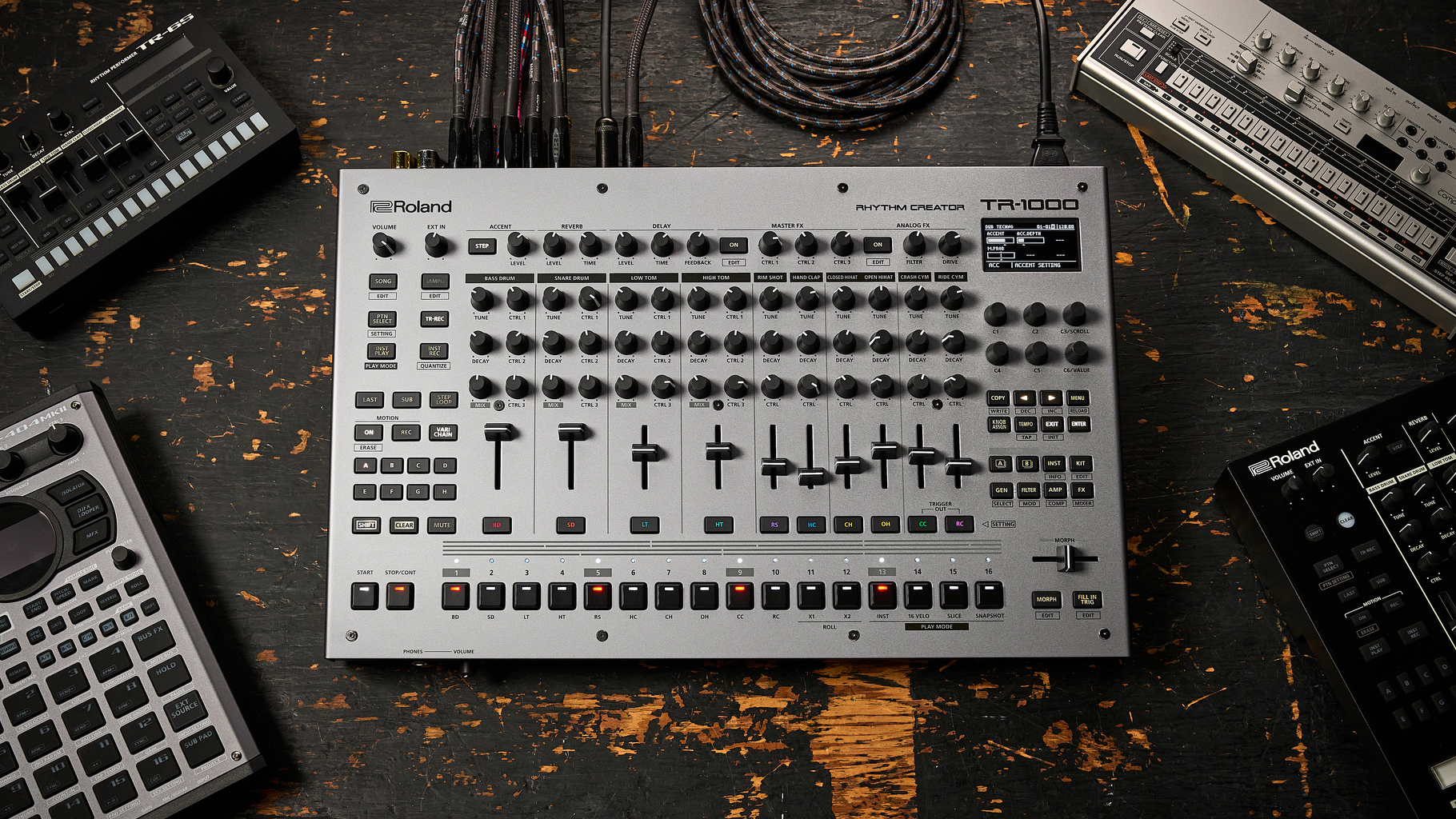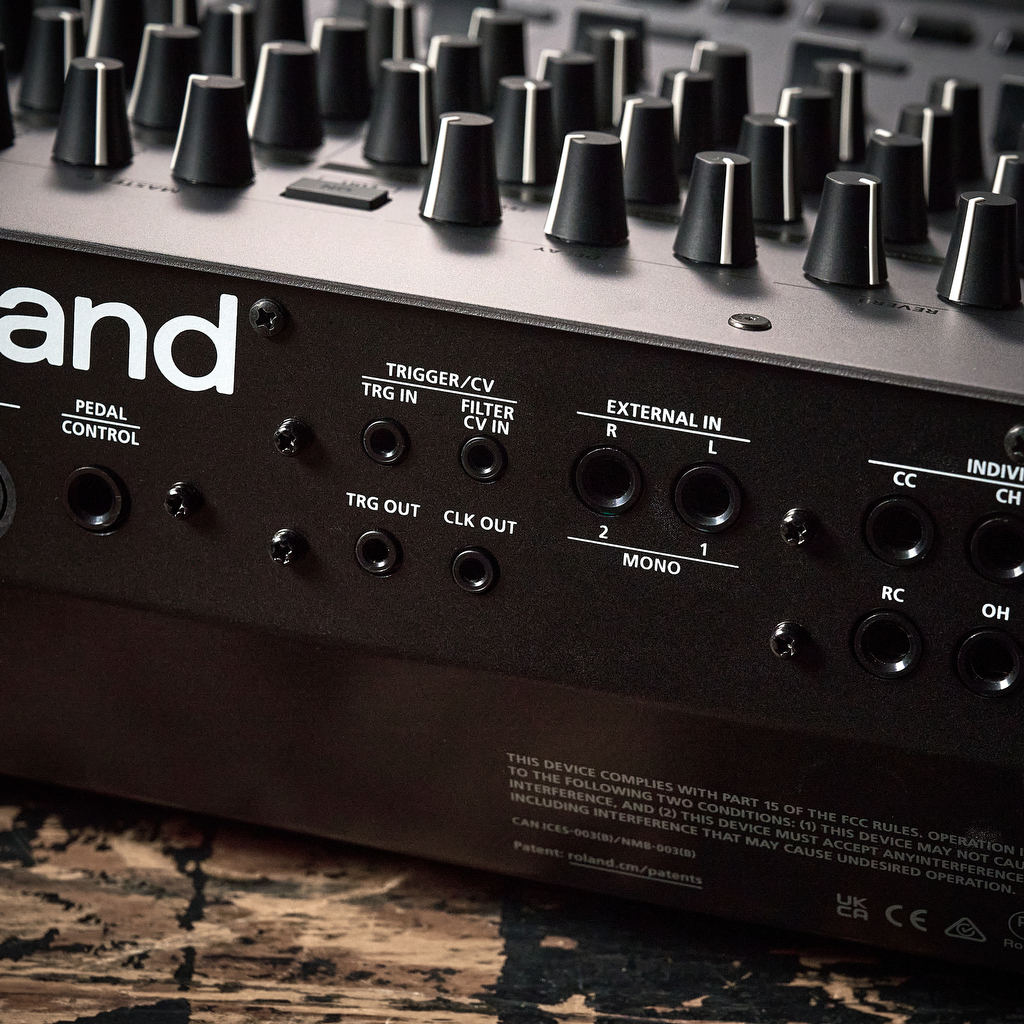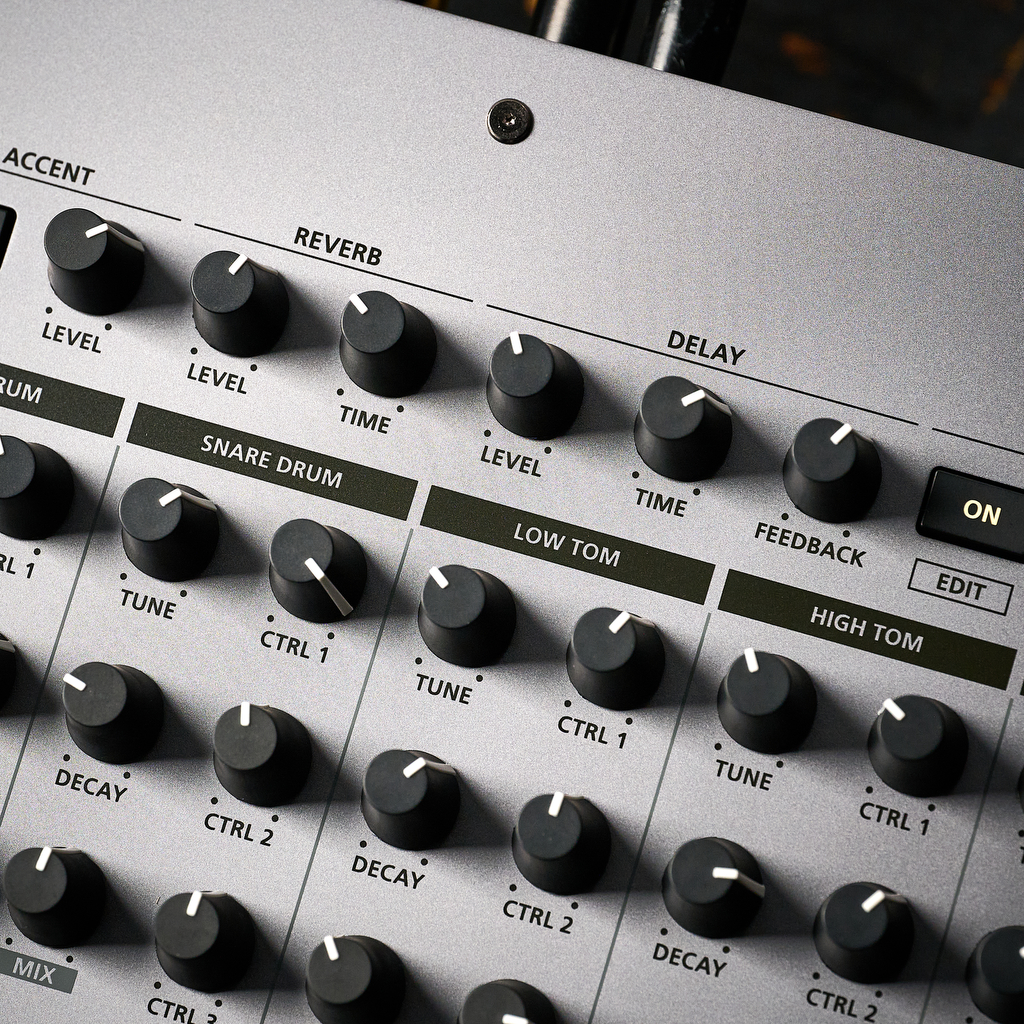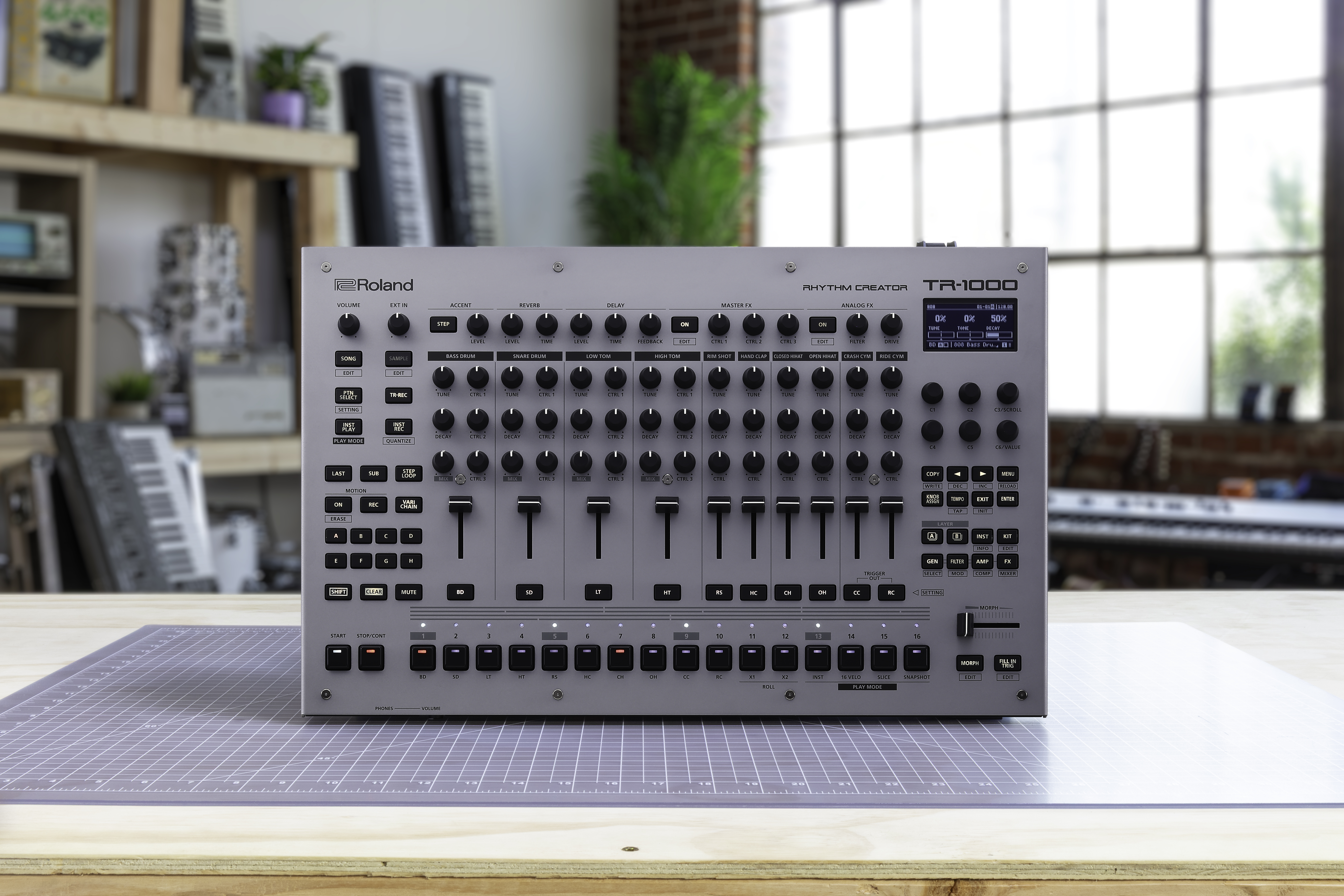“We would like to leave the verdict of price versus value to the customers”: Is the Roland TR-1000 really too expensive?
At $2,699, Roland’s new analogue drum machine is certainly not cheap. But does the TR-1000 deserve the backlash against its price? We spoke to Roland, its customers and other manufacturers to find out

Roland recently released the TR-1000 Rhythm Creator. The company’s first drum machine with analogue voices to be released in 40 years, it’s capable of SP-404 MKII-inspired sampling and has a premium build, analogue effects and extensive connectivity.
In short, it’s a highly capable and robust machine. But it also has a price tag to match, with an official MSRP of £2286/$2699. For many, this was a decimal point too far, prompting a flurry of angry comments taking aim at the Japanese manufacturer.
Since release, the flames have only been fanned by issues some users have experienced with the TR-1000's sync capabilities – issues that Roland has promised to fix with a forthcoming system update. All of this begs the question: is the TR-1000's price justified, or is Roland taking advantage of musicians that have spent decades pining for an analogue successor to the iconic 808 and 909?
To be fair to Roland, the reaction to the TR-1000 has not been entirely negative. Many have praised the company for listening to its customers and finally releasing a drum machine with true analogue 808 and 909 voices. The response from the professional community has been almost universally positive, with Facebook and Instagram feeds full of producers and DJs showing off the many things that the TR-1000 can do.
All that being said, though, the cost is still surprising. “I’m not saying that the price is unreasonable,” opined MusicRadar’s Si Truss in a recent feature on the TR-1000. “There are a lot of impressive features and flexible connectivity options that warrant a top-range price point.”
When we asked Roland to shed some light on the thinking behind the price, the company had this to say: “We thought about what the specifications (and the resulting price) should be for a flagship model from Roland. We are happy with the reaction from the market and would like to leave the verdict of price versus value to the customers.”
Given that the TR-1000 is a flagship model, with components reflective of this – and it’s also the machine that people have been asking Roland to make for years – why, then, is there such an apparent disconnect between the actual price and what people think the price should be? Why does Roland’s chosen price not match its customers’ expected value?
Want all the hottest music and gear news, reviews, deals, features and more, direct to your inbox? Sign up here.

When people complain about the cost of an electronic instrument, they will often speculate on the cost of the materials and components and then compare this figure with the sticker price. But why?
“Because most people have no idea what it takes to make a physical synthesizer, and all the development costs involved,” answers Girts Ozolins, the founder of Erica Synths, a company with an extensive catalogue of hardware products on the market, including a recently-released analogue drum machine, HexDrums.
While it may seem as if the components themselves don’t add up to that much, there are many additional hidden costs that the customer doesn’t see. “You can reduce your question to printed circuit board design, basically,” Girts continues. “In analogue circuitry, there are technically more components than in a microcontroller or FPGA-run instrument, but money-wise, [an analogue instrument] will be maybe 50 Euros extra. But what is tricky is calibration and tuning. That can take much more time with analogue instruments,” and result in additional expense in terms of manpower.

Expense compounds in other unexpected ways. “With digital instruments,” explains Girts, “you just do firmware updates and the issue is fixed. With analogue instruments, most of the time you need to cut traces on the PCB, do the green wires, and then redesign the PCB multiple times until you get to the perfect result. For instance, on HexDrums, we had three revisions, and with the next run we'll [be on the] fourth edition because we found places to optimize.” All of this impacts the price of analogue gear. To wit, R&D on the TR-1000 took Roland four years – a considerably long time for a drum machine.
“That's one of the major reasons why big companies are hesitant to make analogue gear,” says Girts, “because it’s really a lot of manual work. We tried to make some automatic calibration tools, like screwdrivers that tune one volt per octave, but it doesn't work. Even Korg does manual calibration of their analogue synthesizers.”
Another factor to consider is economies of scale. The more of something that you manufacture, the less each unit costs to make. If you ordered a million units, the cost would be much less than 10,000. “But the question is,” counters Girts, “is there a market for a million HexDrums? I don't think so. Of course, that would have to be quite a different instrument. And then if you aim for a million units, you need to reconsider your development and your product strategy radically, because you're aiming for quite a different market.”
Instead, what manufacturers will do is create a diversified lineup of products so that they can appeal to different types of customers with different budgets. “For instance,” Girts says, “those who feel that HexDrums is too expensive can always get the LXR-02 drum machine for a third of the cost. Our pricing strategy is top to bottom.” You can see this in Roland’s lineup too, with the TR-1000 now at the top, the TR-8S and TR-08 in the middle, and the affordable T-8 Beat Machine at the affordable end.
As for the price itself, Girts feels that manufacturers have the right to set any price point that they wish: “There are different pricing strategies. One is you calculate manufacturing costs and then add desired profits, or profits that are required from stakeholders. The other is, you look at what is happening in a market. Roland feels confident that their [first] new analogue drum machine in decades will perform well at that price point. So why not?”

As Roland stated, the TR-1000 is a flagship product, which is typically a premium item with a premium price tag. It’s comparable to the Jupiter-8, or even the original TR-808, which had a similar price to the TR-1000 when adjusted for inflation. And yet people still seem mad about it.
“It's what people have been asking Roland to make for probably 30 years now, and they finally made it,” says musician Jeremy Arndt. “I don't understand the backlash, honestly. There are different segments in every market, and this is primarily aimed at professional users.”
It’s the latter part of Jeremy’s comment that the angry online posters seem to have missed. The TR-1000 is not aimed at hobbyists, like the T-8, but at industry professionals – much as an acoustic musical instrument would be.
“I am the father of a daughter who plays classical music,” says Girts. “Try to buy a decent clarinet for less than 8K. Of course, you can get cheaper ones, but when you go professional, the pricing starts there. For electronic musicians, there is this GAS, you know, gear acquisition syndrome. Classical musicians do not suffer from that.”
Somehow, along the way, electronic musical instruments came to be thought of as consumer products rather than as specialist musical instruments, which have their own price that people do not necessarily question. “How did we get here?” laughs Girts.
As the number of musicians and producers has grown, the cost of hardware has generally decreased. Compare the price of a Fairlight CMI sampler in 1979 (£27,000, or about the same as a house) to a sampler today, which you can comfortably pick up for a few hundred. Synthesizers have travelled in the same direction, with a Yamaha GX-1 setting you back $60K in the early 1970s, the equivalent of $425,000 in 2024. A budget polysynth can now be had for little more than $100.
We’ve been conditioned to expect instruments to be affordable. This is called price expectation, and it’s just one of the many factors that affect how consumers react to the perceived cost and value of a product.
When people evaluate the price of a product, they’re often not taking into account its objective price – that being the cost of manufacturing (what we outlined above) plus the profit margin. According to the Harvard Business Review’s John T. Gourville and Dilip Soman, consumption is driven not so much by the actual cost of a paid-for product as by its perceived cost – what they feel like it should cost.
"The retail price of a TR-1000 is most likely close to the monthly wage of most people with an average paid job. That makes it an aspirational purchase"
No matter that the original TR-808 and TR-909 – the two drum machines referenced by the TR-1000 – were priced about the same on release (accounting for inflation) as the TR-1000 now, and competitors like Erica Synths and Elektron offer similarly specced instruments with comparable price tags, there’s still the expectation that a TR machine should be cheaper. This is because consumers may be holding a reference price in their heads, namely the £600 of the TR-8S, an item with a similar form factor and branding, and comparing it to the new model.
According to research, the jump from the reference price to the actual price ends up being viewed as an unjustified markup, rather than the added value that it really is. And, when consumers attribute price increases to the profit motives of the company, not to production costs or performance, they inevitably get angry, resulting in an emotional backlash.
A phenomenon called category signaling can also occur. For professionals, the price indicates a certain level of seriousness, craftsmanship, and even exclusivity, while for hobbyists, that same price can end up feeling like exclusion. The emotional reaction that results stems from a perceived loss of identity with the brand.
A similar process happened when Teenage Engineering released the OP-XY. “I think people are upset because Teenage Engineering has created an interesting flagship instrument that is out of the reach of a lot of people,” said Richard Nicol of Pittsburgh Modular when asked about the OP-XY’s price. In other words, people feel as if they deserve it, but they can’t afford it.
Additionally, when consumers fail to rationalize a price increase – when they fail to understand the costs associated with manufacturing or running a business – they may infer negative intent on the part of the company, such as greed or manipulation. “The massive sense of entitlement of some commentators online who believe that this is just Roland fleecing their customers is both insidious and laughable,” comments musician and journalist Rob Puricelli.

At the end of the day, the TR-1000 is a premium machine targeted at a specific audience. It may feel subjectively expensive, but it is also objectively capable of generating high-quality analogue and digital drum sounds that are suited to music production at a professional level. If this is what you genuinely need, the price should no longer feel like a barrier – psychologically, at least. Medical equipment may also seem expensive from the outside, but for a hospital it’s a necessary expenditure.
“To justify the TR-1000’s price,” sums up Si Truss in his review of the machine, “you really need to buy into everything that it does.” Truss points out that if you don’t need so much power, “the TR-8S is still a far better value (and more portable) option, even if some sounds are a little flatter.” There’s also the SP-404MKII, if performance sampling is your purview.
To put it another way, “I think there’s a difference between ‘expensive’ and ‘extortionate’,” comments musician and journalist Bob Malkowski. “The retail price of a TR-1000 is most likely close to the monthly wage of most people with an average paid job. That makes it a very considered, aspirational purchase.”
Lastly, Girts Ozolins of Erica Synths notes that, “You cannot have both quality and price. It's always design decisions. If you go with an injection-molded plastic case, it will be a fraction of the cost of a bent sheet aluminum enclosure, but the feel will not be there. Nobody will say that this injection-molded plastic enclosure is built like a tank. It’s not built like a tank – it's built like a toy.”
Roland has finally given the people what they want, at a price that many of them can't stomach. But the reality is that premium gear rarely comes cheap, and in today's crowded marketplace, there's no shortage of budget alternatives available to those who can't justify the outlay. However you feel about the TR-1000's price tag, the fact remains: if you want a drum machine that’s built like a tank, it's going to cost you.
Adam Douglas is a writer and musician based out of Japan. He has been writing about music production off and on for more than 20 years. In his free time (of which he has little) he can usually be found shopping for deals on vintage synths.
You must confirm your public display name before commenting
Please logout and then login again, you will then be prompted to enter your display name.

